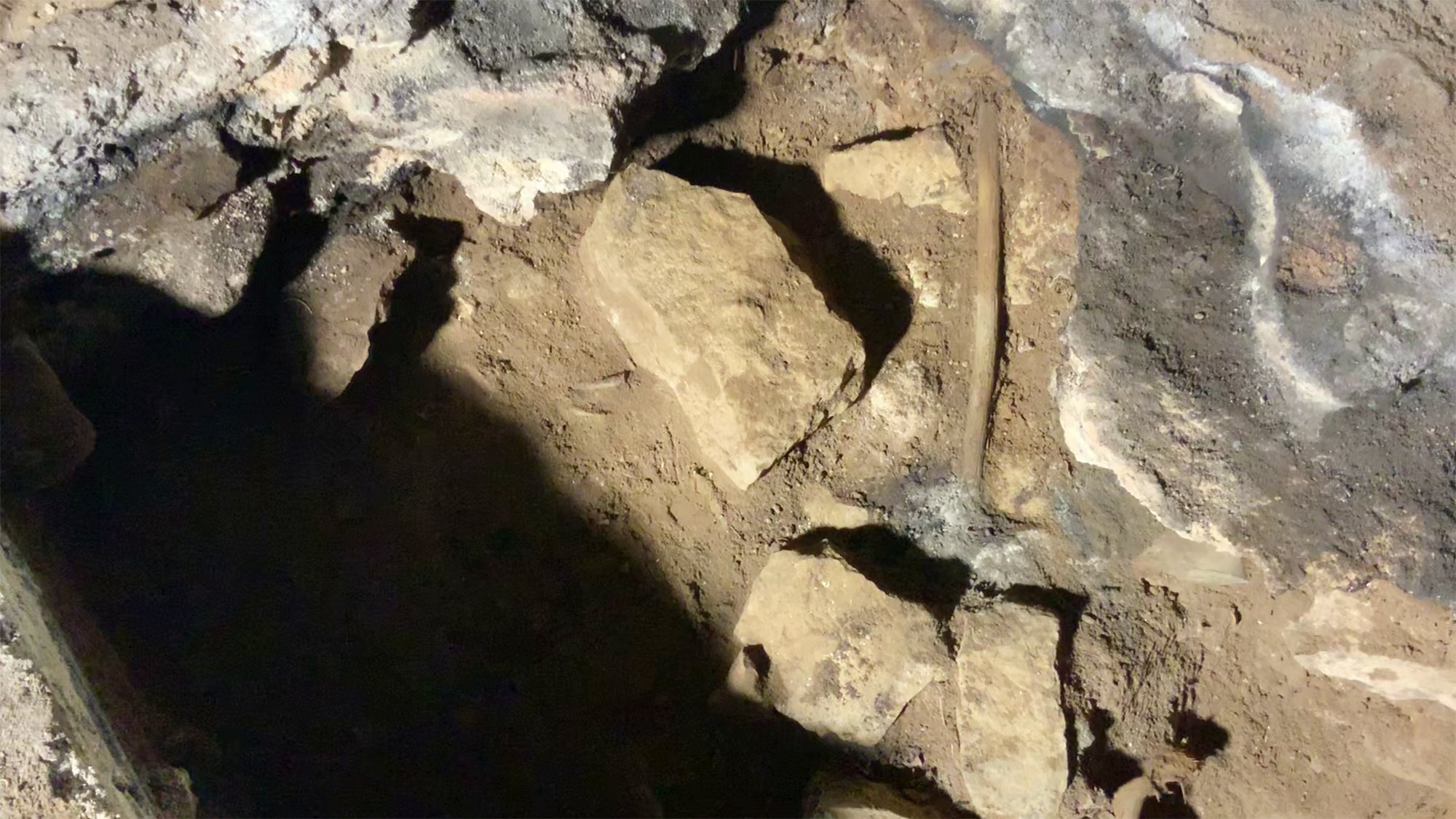

A team in Australia has found archeological evidence for what could be the oldest known culturally transmitted human ritual. Sticks found preserved in fireplaces in a cave southeastern Australia that date back to about to the end of the Last Ice Age, indicate that the ritual intended to cure or hurt has been passed down for roughly 500 generations. The findings are described in a study published July 1 in the journal Nature Human Behaviour.
Healing or harm
Accounts from colonists to Australia in the 19th century documented a specific GunaiKurnai First Nations ritual. The practice included preparing a shaped stick made of dense and hard Casuarina wood with fat and placing it before a fire until the stick falls.
“These rituals were performed by Mulla-mullung, akin to modern doctors, to heal people, or to place a spell on them,” Uncle Russell Mullett, a study co-author, GunaKurnai Elder, and RAP Manager at GunaiKurnai Land and Waters Aboriginal Corporation, tells Popular Science. “Such rituals could be used for healing or for harm, depending on the circumstances of each ceremony.”
[Related: Fossilized plants give us hints about what ice age forests may have looked like.]
However, archaeological material of cultural practices from societies without a written language is not usually preserved over long periods of time. The historical accounts of ancient rituals may have also changed as they were passed down between generations.
To combine archeological methods with GunaiKurnai Traditional Knowledge, the GunaiKurnai Land and Waters Aboriginal Corporation (GLaWAC) requested careful archaeological research be conducted at Cloggs Cave. This series of limestone caves on GunaiKurnai Country in southeastern Australia have long been associated with cultural life in the region.

“Australian Aboriginal societies do not have ‘wars of conquest’ such as happened in many other parts of the world. Rather, across all of Australia, Aboriginal peoples have continued living ties with their Country–the land waters, air and sky of their ancestral lands,” says Mullett. “They are connected to all living things on Country through their ancestral beings and have an intrinsic responsibility to care for Country. Each Aboriginal group has its own language, dances, world views etc, some of which are shared with neighboring groups, others not. That means that you don’t have population movements like you do in many other parts of the world, but rather very long and continuous connections with places, people and cultural practices.”
By combining Traditional Knowledge with technical methods, the team hoped to better understand and tell the story of GunaiKurnai Old Ancestors at the cave.
500 generations
In the study, the team uncovered two miniature fireplaces in the cave. Each fireplace is associated with a single shaped stick made of Casuarina wood that is about 10,000 to 12,000 years-old. The residue analyses of the sticks indicate that there were fats on the sticks, but the team did not find evidence of cooking or heating at the site.
From this evidence, the team believes that the caves were used for ritual purposes 10,000 to 12,000 years ago. This timeline is consistent with the rituals that were documented by ethnographers in the 19th century. These rituals may have been consistently practiced in GunaiKurnai Country since the end of the Last Ice Age–approximately 500 generations.
[Related: Mysterious ‘fairy circles’ may appear on three different continents.]
“It is remarkable to find largely intact installations, replete with their wooden artifacts made of Casuarina wood that had been superbly preserved together with their smeared animal or human fat,” Bruno David, a study co-author and archeologist at Monash University in Melbourne, tells Popular Science. “That the details of these archaeological findings matched exactly the descriptions of ethnographically described 19th century GunaiKurnai ritual practices, indicating 12,000 years of cultural transmission of ritual knowledge is simply astonishing.”
The team is currently doing detailed research on nearby caves that have sedimentary deposits that are capable of preserving more archaeological details of GunaiKurnai cultural practices. They are also discussing how to investigate other parts of this cave to better understand GunaiKurnai Ancestors and their culture.
“This research has been a close partnership between Gunaikurnai Traditional Owners and university researchers from the start,” Mullet and David say. “If we were to identify a single key dimension for the research’s success, it’s the respectful partnership approach between everyone…this kind of research can only happen with mutual respect.”